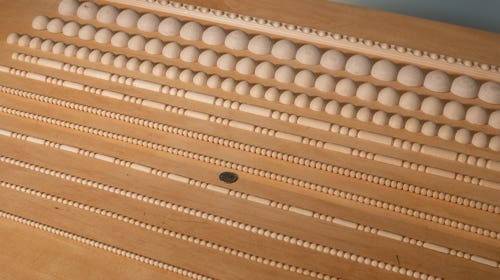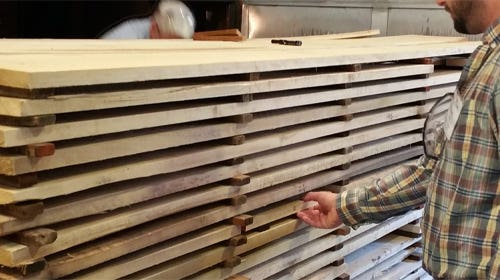ACC buoyed by attendance at Baltimore venue
Still the most popular and the largest of all the American Craft Council shows, turnout was high for the 34th annual American Craft Council Show in Baltimore. There were about…
Still the most popular and the largest of all the American Craft Council shows, turnout was high for the 34th annual American Craft Council Show in Baltimore. There were about 700 exhibitors and 19,500 attendees, matching up with the numbers from the 2009 show.
{loadposition position10}
The juried show, held Feb. 25-28 at the Baltimore Convention Center, featured exhibitors working in all mediums, including wood. Bernadette Boyle, the ACC's director of marketing, says the show attracts a wide audience eager to see unique items crafted by equally unique individuals.
"People in the Baltimore area have been coming to the show for many years and plan their weekend around it. For them, it's an opportunity to meet these artists who come from all over the country and get to know them and hear their stories about what inspires them," says Boyle.
The Baltimore show offered four days of retail sales and two days of wholesale trade. Exhibitors were primarily from the East Coast.
"We're still seeing the effects of the economy on the West Coast artists. They tend to not be able to afford to travel, so we're still seeing a lack with those artisans in regards to the Baltimore show. Essentially, they're taking a break," says Boyle.
There were about 30 woodworking exhibitors, include a dozen turners. Wood makers had a productive show, according to Boyle.
"One really good thing about the woodworkers is that they offer items in a wide range of prices because many not only make large furniture or sculptural pieces, but also accessories for the home, which have lower price points," says Boyle.
Will Wipperfurth, a box maker and owner of Designs by Will in Lake Mills, Wis., is a veteran ACC Baltimore exhibitor who participates in both the retail and wholesale portions of the show.
"In the past I've had a fairly good response, but with the economy the way it is, I feel like the wholesale attendance seemed down. But I did pick up a couple of new accounts, which is encouraging."
Holly Tornheim from Nevada City, Calif., a maker of wooden sculptures and functional pieces, won the show's Award of Excellence. Furniture maker Brad Smith of Bradford Woodworking in Worcester, Pa., received the Booth Design award.
New exhibit categories included Lawn & Garden, which featured artists of outdoor and lawn-specific furniture, décor and accessories. Boyle says that while there were only a handful of artisans in this category, the outdoor theme is promising in terms of gaining momentum and the ACC will build on it for next year.
"It's growing popularity in the retail market as people are not only concerned with the inside of their home, but what the outside of their homes look like aesthetically. We introduced that category as a way to send a message that craft can fit into your lifestyle in your lawn and back yard, in addition to your home."
The Craft4Kids category, introduced two years ago to offer the latest lines of children's clothing, furniture, toys and home décor, also sparked the attendees' interest, according to Boyle.
Peter Boerger of Indianapolis, a maker of wooden eyeglass frames, did especially well in the AltCraft category, which spotlights innovative techniques and use of materials.
"I've got this relatively unusual product and I'm trying to find the best way to sell it and whether to go through retailers or online," says Boerger. "I was happy with the response. I was not sure what to expect in terms of whether people would be willing to purchase this kind of a product at an art show. I sold some frames, so in the end it was a good experience for me."
For emerging artists, the School-to-Market category bridges the gap between academic programs and the marketplace for sculptural and functional craft. Featured schools included Savannah College of Art and Design in Savannah, Ga., and Rhode Island School of Design in Providence, R.I.
"We seek out schools with strong craft materials studies programs and [Rhode Island School of Design] is always a school that we've worked with at our educational events and they just seemed like the perfect fit for the show," says Boyle.
For information on Baltimore and other ACC venues, visit www.craftcouncil.org.
This article originally appeared in the May 2010 issue.







